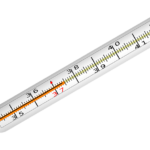Remember the old high school cheer: two, four, six, eight, who do we appreciate?
Turns out, that’s not just a cheer, it’s shorthand for the rule on when you can file bankruptcy again.
And it points out that when you can file again depends on what kind of bankruptcy you filed last time.
Here’s how it works.
If prior case was Chapter 13
You are eligible to file another Chapter 13 case TWO years from filing an earlier Chapter 13. [ This had to be a drafting error since nearly all Chapter 13’s run at least three years. But I’ll take it.]
If you now want to file Chapter 7, you must wait SIX years.
If prior case was Chapter 7
You can file a Chapter 13 case FOUR years after an earlier Chapter 7.
But if you have your eye on Chapter 7, the wait is a whopping EIGHT years.
Put another way
Starting with the kind of case you filed before, as we did above, is one way to look at eligibility.
But here’s how it looks if you know what kind of case suits your current situation best.
- To file Chapter 13, your prior Chapter 13 must be at least TWO years ago
- To file Chapter 13 when the earlier case was Chapter 7, the wait is FOUR years
- To file Chapter 7 with an old Chapter 13 filing, the wait is SIX years
- To file Chapter 7 following an earlier Chapter 7, EIGHT years must elapse.
Intervals between discharges
We’ve talked about the time between cases, and really glossed over the real measurement.
The statutory intervals really measure the time between cases in which a discharge is available. The two, four, six, eight rule limits when you can file a new case in which you can get a discharge of your dischargeable debts.
There are time when the discharge is less important than the automatic stay. Most frequently, these are cases of “Chapter 20“, a Chapter 7 followed immediately by a Chapter 13.
The debtor doesn’t get a discharge in the 13 following the 7, but they do get a stay of collection action and a court-enforced repayment plan.
Chapter 20 works well when the debts that survived the Chapter 7 aren’t dischargeable anyway. These are times when the debtor really just needs time and space to pay off the nondischargeable debt that is left from the Chapter 7.
The Bankruptcy Code limits the frequency of getting a discharge, not the filing and completion of the bankruptcy case.
Counting between bankruptcy cases
It shouldn’t be complicated to count to eight, but it CAN be confusing. Where do you start counting?
Count from the filing of the first case to the filing of the second case.
And count only cases in which you got a discharge. If your earlier case was dismissed or concluded without a discharge, it doesn’t count.
So, let’s have a cheer for bankruptcy relief.
More
When bankruptcy’s automatic stay doesn’t apply






